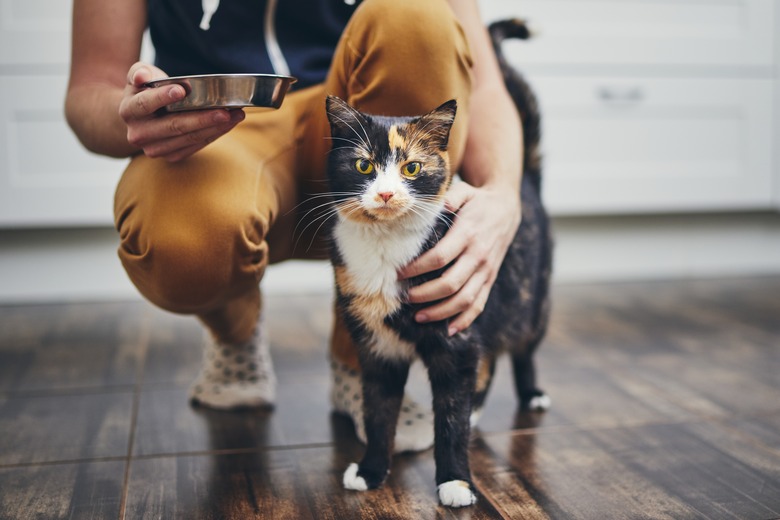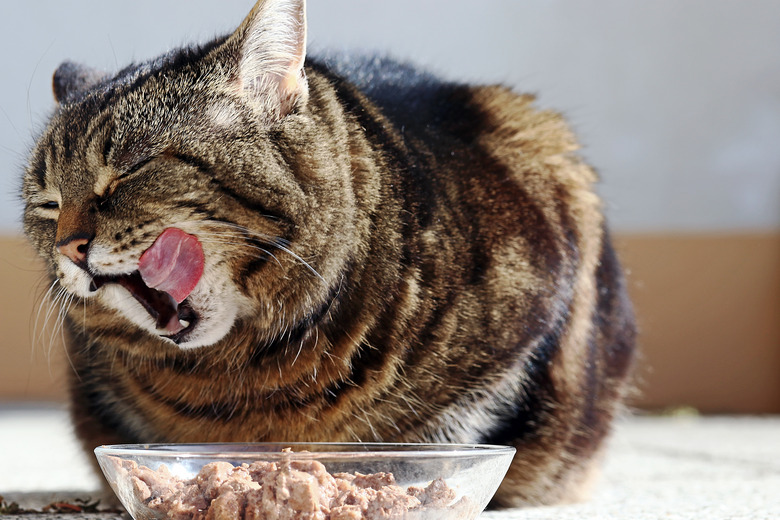Can Cats Have Bacon?
Bacon is a staple in most American households, and dropping a little piece of people food into your cat's bowl is a habit in which many of us engage. But is bacon safe for cats? And can cats eat raw bacon if you're opening a package and your kitty suddenly appears at your feet?
You may think you're rewarding your pet or showing love by offering table scraps, but certain foods can be a problem for feline digestion, and others may be downright dangerous. Before you make a habit of sharing your breakfast with your kitty, speak with your veterinarian.
Is bacon bad for cats?
Is bacon bad for cats?
There's a reason that what you eat every day is called "people food." Feline nutrition is a careful balance of the vitamins, carbs, and healthy fats that cats need to grow and thrive. Bits from the kitchen counter can mess with this important mixture, particularly foods like bacon that are high in calories and salt.
Keep in mind that fat trimmings from a piece of steak or a pork chop are a definite no-no (and bacon is often very fatty itself). When this high-calorie bit of protein is given to a cat, the result could be vomiting, diarrhea, or even a case of pancreatitis. Your best bet is to stick to a healthy, vet-approved diet for your cat and don't offer anything from the table. This way, your kitty won't come to expect a little piece to be thrown her way every time you fry bacon.
Table foods to avoid
Table foods to avoid
Keep a list of the table foods to avoid feeding your cat prominently displayed so guests, your kids, and any cat sitter you employ can check it if they're unsure about a particular item. The most dangerous foods you can feed your cat include alcoholic and caffeinated drinks, which can slosh from glasses and cups onto the floor. Be sure to wipe up errant spills so your cat doesn't sample them. Chocolate is a no-go for cats and dogs alike, in part because it contains caffeine as well as another substance that can rev your pet's heart and nervous system.
Animal bones may seem innocent enough, as cats kill mice and birds in the wild, but chicken bones and ribs are also on the danger list since they can break into dangerous splinters. Also skip anything from the onion family (garlic, chives, leeks), whether it's fresh or powdered. These items tend to show up on pizza crust, so refrain from giving these bits to your kitty. Lastly, never offer grapes, raisins, raw eggs (they're a source of bacteria), or yeasted dough.
Tips for feeding your cat
Tips for feeding your cat
For optimal health, ask your vet about the best commercial brands of cat food for your pet depending on his age (kitten or adult cat), current weight, and other health issues. The portion sizes you offer should also match your cat's exercise needs and size. For a very active cat, you may need to offer 20 percent to 40 percent more food above his maintenance level so he has enough fuel to get through the day. For a cat who is a big lounger, a little less than the standard amount (10 percent under) is a good rule of thumb.
Strive to feed your cat twice a day and always offer fresh water for good hydration. Check the weather as you scoop kibble too since very low (and high) temperatures require more food, as keeping warm and cooling off take extra effort and calories. If your kitty is on the tubby side, put his bowl down for a set amount of time. Once that moment is over, remove it.

